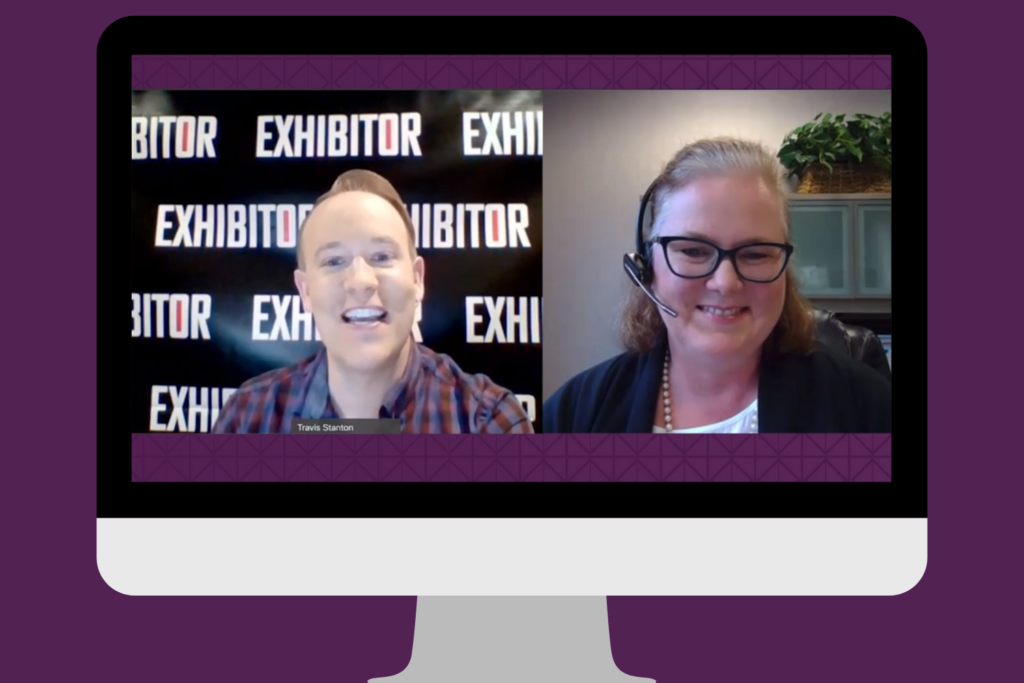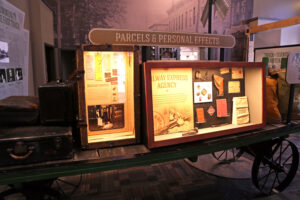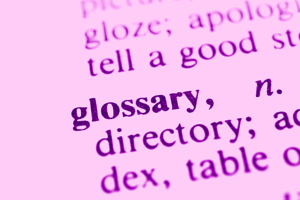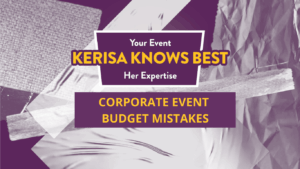Early in May, Exhibitor Media Group conducted a survey of both corporate exhibit managers, as well as suppliers to the trade show and events industry, about the impacts of COVID-19 on face-to-face marketing. Exhibit Concepts was a sponsor of the research and had the opportunity to have Travis Stanton, Editor of Exhibitor Magazine, participate in our live Virtual Exhibit Platform (VEP) event on May 28th to share insights from the research.

I want to thank everyone for attending my session during ECI’s recent virtual event. It’s always wonderful to share our research with inquiring minds, and I appreciate every opportunity to interface with the men and women out there in the trade show trenches turning convention-center concrete and a little marketing magic into sales-lead gold. During the session we weren’t able to get to all of your questions, so I wanted to take this chance to answer a few more that were submitted by audience members. Hopefully these answers will help you continue planning ahead for the return of trade shows and live events.
- When discussing additional measures that show organizers may be required to or voluntarily implement in order to keep event attendees safe, we received the following question: Will these overall costs ultimately be passed on to exhibitors which would result in pricing shows out of reach for some companies?
That’s difficult to say. My suspicion is that exhibitors will end up paying at least a portion of these costs (even if they’re disguised as something else), but not all of them. In the end, it will come down to who puts these guidelines in place, and what the specific guidelines entail. If guidelines are put in place by state and local governments, I think there’s a higher likelihood that at least some of the burden may be shouldered by venues and convention centers — especially if these become long-term health and safety guidelines versus COVID-specific protocols.
For example, if Las Vegas passed a measure indefinitely requiring all large events to incorporate thermal imaging to detect attendees’ temperatures before entering the show floor, I anticipate that over time this equipment would become standard at most Vegas trade show venues. In other words, the upfront costs would be largely assumed by hotels, resorts, and convention centers. If, however, a show organizer mandated all attendees wear face masks at a Q3 2020 event, I anticipate guests would either be expected to bring their own, or masks would be made available to registered attendees through some sort of corporate sponsorship (want your logo on the face of every attendee?).
Having said that, I anticipate that whether it’s mandated or not, most (if not all) exhibitors will want to increase the frequency and scope of their booth cleaning. And the related service fees will undoubtedly be paid by individual exhibiting companies. In other words, I think responsibility (and related expense) will likely be shared by all stakeholders.
- Another question also related to additional measures to keep attendees safe: Do you think that hard floors will replace carpet?
I believe that, at least for the foreseeable future, easy-to-clean surfaces will be preferred by most exhibitors. So yes, I anticipate many exhibiting companies will opt for alternate flooring. On the other hand, I’m not sure we’re likely to see aisle carpet entirely replaced anytime soon. At several Asian trade shows, workers have continuously sprayed aisle carpeting with a disinfectant. Assuming this practice proves safe, I suspect we will continue to see carpeting in the aisles (and in many exhibits as well).
Still, anything that can be efficiently and effectively wiped down will be preferable over comparably difficult-to-sanitize flooring and finishes. And that doesn’t just apply to floors. I’m aware of companies currently running tests on fabrics typically used in traditional pipe-and-drape setups. Known as Banjo fabric, the material is cheap but difficult to sanitize, and it’s therefore less than ideal for use on the kind of massive scale that major international trade shows require. Preliminary testing seems to indicate that other, newer options may offer a better combination of water resistance, air permeability, and water-vapor transmission. As such, that material (and others) may be replaced by alternatives that prove more capable of helping to prevent the spread of the virus.
- When discussing what corporate exhibit managers should be doing now to prepare themselves for when trade shows and events resume, Travis recommended they pursue continuing education opportunities such as the CTSM program and the question came in: How do we get certified?
As I mentioned during my session, now is the perfect time to invest in yourself. And earning your Certified Trade Show Marketer designation will not only help you do your job more effectively, it may also result in increased job security, greater respect from upper management, and a higher annual salary. In the event you’ve been laid off, earning your CTSM can make your resume stand out from other job seekers. In fact, we’ve even seen job postings that note CTSM candidates are preferred. For more information on the CTSM program, visit www.ExhibitorOnline.com/CTSM.
- While this was not really a question, one attendee shared that there is an opportunity to make a nice-looking hand sanitizer dispenser for booths.
I suppose that depends on what you define as “nice looking,” but yes. I’ve seen dozens (if not hundreds) of options in the past two months that look a whole lot better than the dispensers we’re used to seeing at grocery stores and convention centers. In fact, I think hand-sanitizer dispensers may become the new literature racks in that we’ll probably see them inside the majority of (at least large) exhibits. Many incorporate graphic options that enable you to display your logo or key message, making them a lot more functional than a lowly Purell bottle on your reception desk. Others boast sleek finishes, contemporary designs, and even integrated lighting and multimedia options. Obviously, the best of these are motion-controlled so that users need not touch the dispensers themselves in order to disinfect. Also look for a sort of drip tray that prevents excess sanitizer from pooling beneath the dispenser or atop your flooring.
Based upon other comments received during the event, it was clear that this information and insight report was especially relevant to attendees. For example, we received this request, “Will the slides be available as a resource? I’d like to share with my team so they can click through at their own pace.” Our complete session with Travis’s presentation and Q&A can be found here. The Exhibitor Media Group Insight white paper is also available for download.
Clearly the trade show and event industry has been rocked by COVID-19 and the impact on business travel and large-scale meetings and events. With so many of us working remotely, there was some comfort in hearing that we are not alone and that many others are in the same boat. There was also something reassuring in being able to see other attendees interacting via Chat with similar questions and concerns.
Trade shows and events will eventually return, there is no doubt about that. The timing is the real question and there may be some changes brought about by the pandemic that will be part of our new normal. But at the end of the day, there is no better way to make connections, to launch and demonstrate new products or to build brand awareness than in a face-to-face setting.
Thank you again to Travis Stanton and Exhibitor Media Group for conducting this research and sharing insights during Exhibit Concepts’ VExP event.









